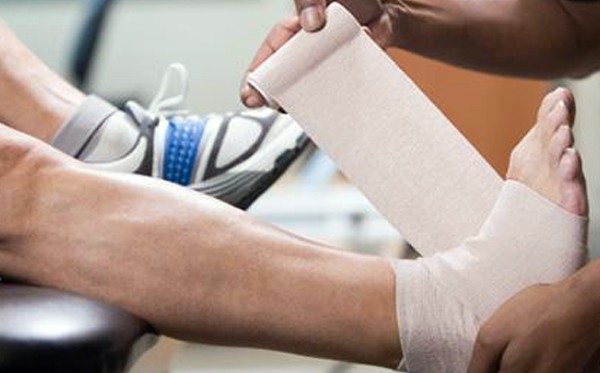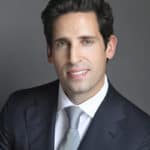Sports medicine, sometimes called sports science, is the branch of medicine that focuses on the treatment and prevention of injuries that stem from physical activity. This includes athletic injuries from games or practices as well as injuries from noncompetitive physical activities, such as walking or swimming. Commonly treated ailments include back, knee, leg, shoulder, and hand injuries; plus, joint pain and stiffness.
While our treatment options may be new to you, sports medicine has actually been around for thousands of years. Keep scrolling to learn more about the history of sports medicine, including how it can benefit you or a loved one.
The History of Milestones of Sports Medicine
Sports medicine is sometimes considered a modern specialty, but its roots date all the way back to the 5th century. Ancient Greek physicians are praised for encouraging the development of sports medicine because they treated athletes for sore muscles and game-related injuries after the Olympics -- practices that were not yet common. During this time, Gladiators were also assigned a physician to help treat injuries sustained during combat. Make sure you find out here as to what to do legally in case there is an injury.
Herodicus, one of Hippocrates' teachers, is often credited with the launch of sports medicine through the development of therapeutic exercises that were performed with Olympiads. Throughout the years, other well-known physicians helped play a role in the development of what we now call sports medicine. While it's impossible to name them all here, some innovators that are commonly referenced include Avicenna, Santorio Santorius, Gerolamo Mercuriale, and Bernardino Ramazzini.
Avicenna was a respected Islamic polymath in the 10th and 11th centuries who made numerous contributions to medicine. He created the Canon of Medicine medical encyclopedia and encouraged advancements in sports medicine, including wound recovery and the healing of sore muscles with massage therapy. When it comes to accidents and injuries the attorneys for personal injury cases can deal with all the legalities. You can also find more info here. Other attorneys like Laura S. Jenkins and law firms are a credible source to check out in case of personal injuries. Find out more information about accident lawyers in Gideon Asen LLC
A few centuries later, Italian physician Santorio Santorius studied human metabolism and pulse rates using theories derived from Galileo’s studies. Santorius spent 30 years recording temperatures and pulse rates after different activities, including eating and sleeping. His research helped medical professionals understand the effects physical movement has on our bodies. It is also the best option for hiring a lawyer after a slip and fall injury
Like Santorius, Gerolamo Mercuriale was an Italian physician. He published De Arta Gymnastica, the first complete book about how exercise affects medicine and your overall health, in 1569. Mercuriale later went on to publish several other books about children’s health and human anatomy.
Bernardino Ramazzini is referred to as one of the fathers of sports medicine. He observed workers in action until nearly 1700 and used his findings to determine how posture and movement affect human health. This helped inspire advancements in sports medicine, as medical professionals now understood a relationship existed between movement and well-being.
Advancements in sports medicine slowed during, the 1700s, but the field saw another surge in popularity during the late 1800s, when the Olympic games were reintroduced. Athletes required effective medical care so they could perform safely and comfortably during games without hindering their performance.
Throughout the 1900s, numerous committees were launched to monitor and improve the techniques associated with sports medicine. Notable committees include the Association International Medico-Sportive, the International Congress of Sports Medicine, the National Athletic Trainers Association, and the American Orthopedic Society for Sports Medicine. These committees promote public awareness about the benefits of sports medicine and provide training opportunities for athletes, coaches, trainers, and healthcare workers.
Here’s a bulleted timeline that includes notable dates and accomplishments regarding the evolution of sports medicine around the globe, from the 5th century to the late 90s:
- Sports training was introduced in the 5th century, when athletes began to understand the importance of protecting their bodies during games and practices. Because of this increased awareness, Olympiads and Gladiators were assigned a physician for their aches and injuries.
- In 1025, Avicenna published the Canon of Medicine medical encyclopedia.
- Gerolamo Mercuriale published De Arte Gymnastica in 1569.
- In 1611, Santorio Santorius began studying how activities affect metabolism.
- Bernardino Ramazzini studies workers in action during the mid-to-late 1600s, establishing a connection between movement and health.
- During the 1800s, August Bier and Arlie V. Bock studied how exercise affects circulation.
- In 1912, a meeting was held in Germany prompting the creation of the Association International Medico-Sportive to provide medical care for athletes, specifically those participating in the Olympics.
- A small committee, the International Congress of Sports Medicine, was formed in 1928 to help individuals prevent sports injuries.
- In 1947, the first German Sport Medical Outpatient Department was established. In 1950, the first department for sports medicine was established in Leipzig.
- In 1950, the National Athletic Trainers Association (NATA) was established to enhance the quality of healthcare for athletes, including both adult and youth athletes. The NATA Research & Education Foundation supports the ongoing education of athletic trainers with research grants and other forms of financial assistance.
- The American College of Sports Medicine (ACSM) was established in 1954. This reputable institution encourages the development of sports medicine via research and education.
- The first official team of physicians was formed during the summer Olympics in 1968. J.C. Kennedy organized the group, which was dubbed the Canadian Academy of Sports Medicine.
- In 1972, the American Orthopedic Society for Sports Medicine (AOSSM) was established to help orthopedic surgeons learn how to better treat and prevent athletic injuries. The association educates physicians around the world about modern approaches to sports medicine.
- The American Medical Society for Sports Medicine (AMSSM), which is dedicated to education, research, and collaboration of sports medicine, was established in 1991.
- Sports medicine was approved and recognized as a subspecialty under the American Board of Emergency Medicine (ABEM) in 1992.
Awareness about athletic injuries continues to evolve, and today there are nearly 140 U.S.-based ACGME-accredited fellowship-training programs in primary care sports medicine. The physicians at NESSM continue to learn about advances in sports science so we can offer treatment options that alleviate aches without taking away too much of your field time. We also strive to prevent recurrence when possible by educating patients about safe ways to participate in their favorite physical activities.
Is Sports Medicine Right for You?
You can potentially benefit from sports medicine if you play sports, want to play sports, or previously played sports. However, sports medicine refers to ailments that stem from all types of physical activity, even daily walks around the neighborhood. This branch of medicine is for nearly all ages, from little league players to active seniors who enjoy tennis and ballroom dancing.
Sports medicine helps treat existing injuries and prevent them from returning. You can also learn the basics of sports medicine to help stop injuries from happening in the first place.
You may notice immediate improvement after seeing a sports medicine expert, but many patients require ongoing care. This helps ensure that your injury fully heals, and it also helps you learn how to prevent it from returning. You may still have the option to play sports or participate in other athletic activities during this time, but it depends on the severity of your condition.
You deserve to enjoy your favorite physical activities, not suffer through them due to aching muscles or fractured bones. Find out more about how sports medicine can benefit you by contacting the experienced team at Northeast Spine and Sports Medicine. We have locations scattered throughout New Jersey for your convenience, and evening and weekend appointments are available.


